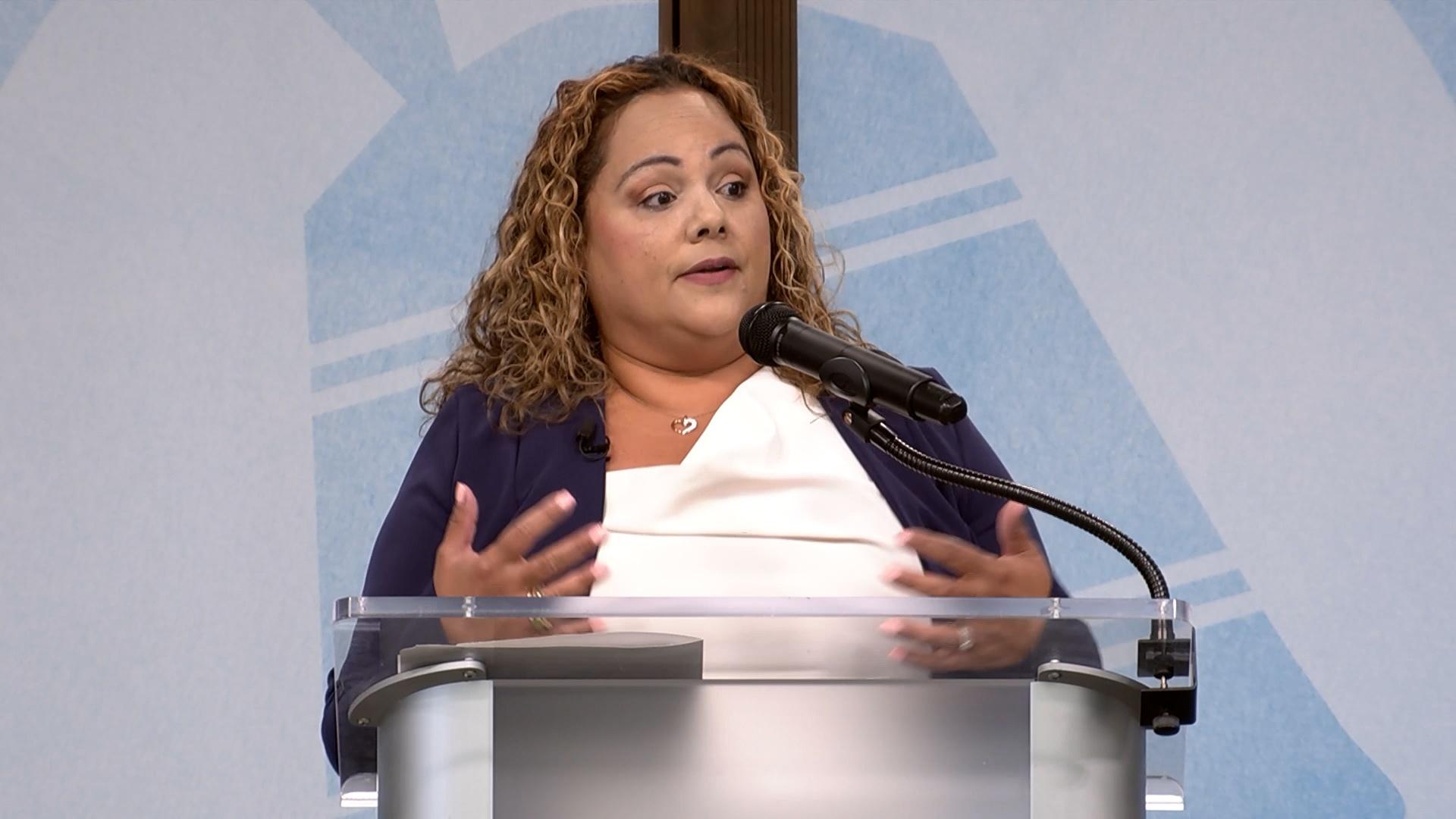Report on Space-Based Agricultural Research and its Alignment with Sustainable Development Goals
Mission Overview and Collaborative Framework
A research initiative focused on the cultivation of sweet potatoes and chickpeas in space has yielded significant scientific results. The mission, characterized by a unique collaborative model, united citizen astronauts, professional scientists, and students to conduct meaningful research. This approach, as articulated by decorated former NASA aerospace engineer Bowe, demonstrates a new, more inclusive paradigm for scientific exploration. The project’s core objective was to democratize access to space science, proving that non-traditional pathways can lead to impactful discoveries. The ultimate goal of this research extends to the long-term survival of humanity beyond Earth by developing sustainable living systems for new worlds.
Key Scientific Outcomes and Dissemination
- A peer-reviewed scientific paper has been produced, which provides a detailed analysis of the molecular and physiological responses of the crops to the space environment.
- The research findings are scheduled for presentation to the international scientific community at the International Astronautical Congress in Sydney, Australia, on October 1, 2025.
Alignment with Sustainable Development Goals (SDGs)
The mission’s objectives and outcomes demonstrate a strong alignment with several United Nations Sustainable Development Goals (SDGs).
- SDG 2: Zero Hunger: By investigating crop resilience in the extreme environment of space, this research contributes vital knowledge to developing climate-resilient and resource-efficient agricultural practices on Earth. This directly supports the goal of ensuring food security and promoting sustainable agriculture.
- SDG 4: Quality Education: The direct involvement of students in a high-level space experiment provides an unparalleled educational opportunity, fostering interest in STEM fields and contributing to inclusive and equitable quality education for the next generation of innovators.
- SDG 9: Industry, Innovation, and Infrastructure: This project is a prime example of fostering innovation. It pushes the boundaries of biotechnology and aerospace engineering, contributing to the scientific infrastructure required for both future space exploration and advanced agricultural solutions on Earth.
- SDG 17: Partnerships for the Goals: The collaboration between citizen astronauts, academic researchers, and students exemplifies a multi-stakeholder partnership. It showcases an effective model for mobilizing diverse groups to achieve ambitious scientific and sustainable development objectives.
Conclusion and Future Implications
This research initiative has successfully transitioned from concept to flight experiment and, finally, to internationally recognized science. It underscores that the future of space exploration is intrinsically linked to sustainability and habitation. The findings not only pave the way for long-term human presence in space but also offer innovative solutions to pressing terrestrial challenges, particularly in food security and education, thereby making a direct contribution to the global sustainable development agenda.
Analysis of Sustainable Development Goals in the Article
-
Which SDGs are addressed or connected to the issues highlighted in the article?
- SDG 2: Zero Hunger: The research focuses on the “molecular and physiological responses of these crops in space,” specifically sweet potatoes and chickpeas. This fundamental agricultural research, aimed at learning how to sustain life beyond Earth, has direct implications for food security and innovative agricultural practices.
- SDG 4: Quality Education: The article explicitly mentions that the mission involved “scientists and students” working together. This collaboration provides students with a unique, hands-on learning opportunity in advanced scientific research, contributing to quality education and skill development in STEM fields.
- SDG 9: Industry, Innovation, and Infrastructure: The entire project is an example of scientific innovation. It is described as turning “an idea into a flight experiment and then into international science.” This fosters scientific research and technological advancement, which are core components of SDG 9.
- SDG 17: Partnerships for the Goals: The article highlights the collaborative nature of the mission, stating that it proves “what is possible when citizen astronauts, scientists, and students unite to conduct meaningful research.” This multi-stakeholder partnership is a clear example of the collaborative spirit required to achieve the SDGs.
-
What specific targets under those SDGs can be identified based on the article’s content?
- Target 2.a (under SDG 2): Increase investment, including through enhanced international cooperation, in rural infrastructure, agricultural research and extension services, technology development and plant and livestock gene banks in order to enhance agricultural productive capacity. The research on crops in space represents an investment in advanced agricultural research and technology development.
- Target 4.4 (under SDG 4): By 2030, substantially increase the number of youth and adults who have relevant skills, including technical and vocational skills, for employment, decent jobs and entrepreneurship. The involvement of students in a high-level space mission provides them with highly relevant technical and scientific skills.
- Target 9.5 (under SDG 9): Enhance scientific research, upgrade the technological capabilities of industrial sectors in all countries, in particular developing countries, including, by 2030, encouraging innovation and substantially increasing the number of research and development workers per 1 million people and public and private research and development spending. The mission directly contributes to enhancing scientific research and encouraging innovation by “opening doors to science in space that were closed before.”
- Target 17.16 (under SDG 17): Enhance the Global Partnership for Sustainable Development, complemented by multi-stakeholder partnerships that mobilize and share knowledge, expertise, technology and financial resources, to support the achievement of the sustainable development goals in all countries, in particular developing countries. The project is a multi-stakeholder partnership that unites “citizen astronauts, scientists, and students” to share knowledge and conduct research.
-
Are there any indicators mentioned or implied in the article that can be used to measure progress towards the identified targets?
- Implied Indicator for Target 9.5: The production of a “peer-reviewed paper” and the plan to present findings at the “International Astronautical Congress” serve as tangible indicators of scientific research output and knowledge sharing. These are qualitative measures of progress in scientific innovation.
- Implied Indicator for Target 4.4: The participation of “students” in the research mission is an indicator. While the number is not specified, it points to the creation of educational opportunities for youth to acquire advanced scientific skills.
- Implied Indicator for Target 17.16: The successful execution of the mission and the production of research findings by the collaborative team of “citizen astronauts, scientists, and students” serves as an indicator of an effective multi-stakeholder partnership in action.
SDGs, Targets and Indicators Summary
| SDGs | Targets | Indicators (Implied from the article) |
|---|---|---|
| SDG 2: Zero Hunger | 2.a: Increase investment in agricultural research and technology development. | Execution of a flight experiment to study the “molecular and physiological responses of… crops in space.” |
| SDG 4: Quality Education | 4.4: Increase the number of youth with relevant technical and scientific skills. | The active participation of “students” alongside scientists in conducting meaningful research. |
| SDG 9: Industry, Innovation, and Infrastructure | 9.5: Enhance scientific research and encourage innovation. | The production of a “peer-reviewed paper” and the presentation of findings at an “International Astronautical Congress.” |
| SDG 17: Partnerships for the Goals | 17.16: Enhance multi-stakeholder partnerships that share knowledge and expertise. | The successful collaboration where “citizen astronauts, scientists, and students unite to conduct meaningful research.” |
Source: m.farms.com






